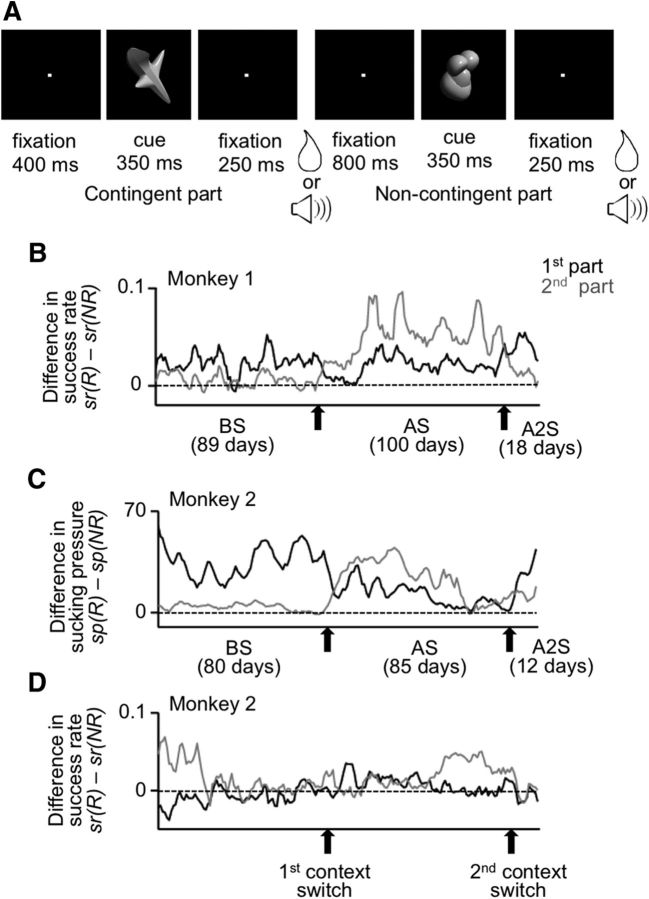Figure 6.
Trial structure and behavioral results in the experiments with context-dependent cue-outcome contingency. A, Events in a trial. The sequence of a visual-cue presentation and outcome delivery was repeated twice in each trial. Before the first context switch, there was a fixed cue-outcome contingency in the first part of the trial (contingent part), whereas two types of outcome were randomly provided in the second part of the trial (noncontingent part). The order of the contingent and noncontingent parts was reversed after the first context switch and returned to the original order after the second context switch. B, Difference in daily calculated success rate of Monkey 1, after reward-associated cues minus after no-reward-associated cues, in the first and second parts of the trial. C, Difference in daily calculated mean anticipatory sucking strength of Monkey 2, after reward-associated cues minus after no-reward associated cues, in the first and second parts of trial. D, Difference in daily calculated success rate of Monkey 2, after reward-associated cues minus after no-reward associated cues, in the first and second parts of trial. B–D, Black and gray lines indicate values in the first and second parts of the trial, respectively. The values were smoothened over 5 d with equal weights. BS, AS, and A2S indicate the period before the first context switch, that between the first and second context switches, and that after the second context switch, respectively.

